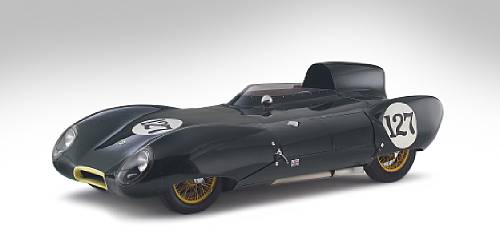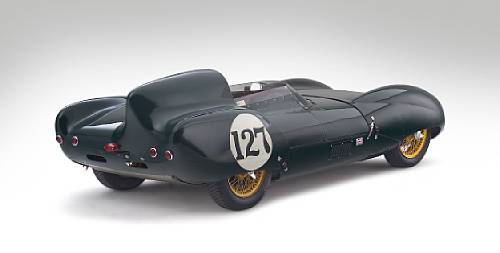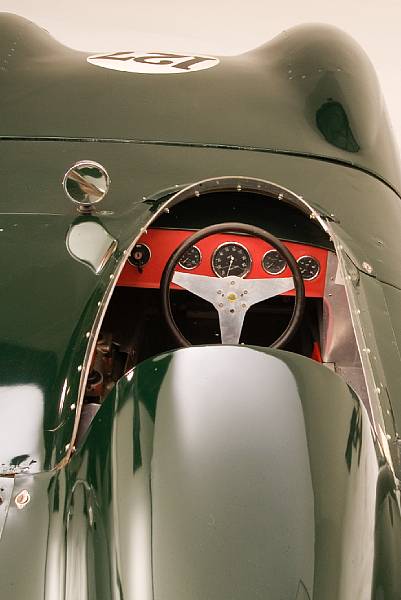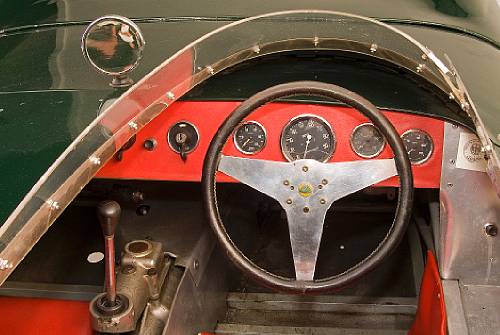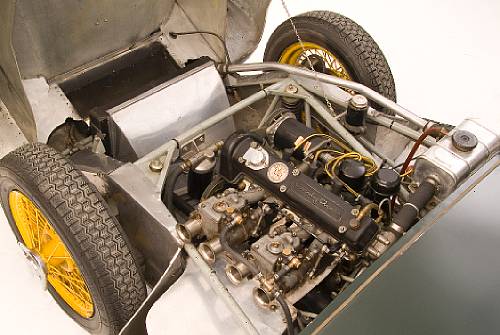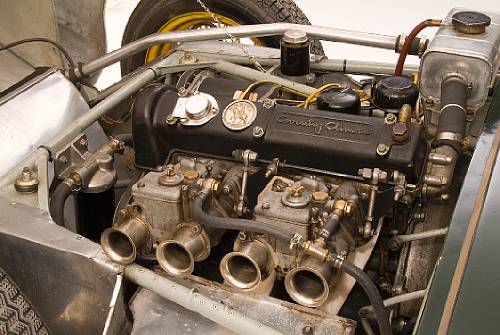1957-58 Lotus-Climax Eleven Sports-Racing Two-Seater
Lot No: 208 - A Sale of Important Sports, Competition and Collectors' Motor Cars and Fine Automobilia, 1 Sep 2006 at Goodwood Revival, Chichester, Sussex
Chassis no. MK 11 225
Engine no. FWA400/20
Sold for £79,600 inclusive of Buyer's Premium
The immortal – and sublimely beautiful – Lotus Eleven was the 1100-1500cc sports-racing model which really established designer Colin Chapman’s Lotus Engineering Company Ltd as a serious manufacturer of customer production competition cars.
The incredibly pretty Eleven – its enveloping bodyshell styled by consultant aerodynamicist Frank Costin – emerged in 1956 as a combination of ideas and proven concepts from earlier Lotus competition cars. It incorporated Colin Chapman’s very latest ideas in aerodynamic theory, engine, suspension and brake technology. The Eleven became the most prolific racing car of its time, and for several years dominated its class not only in the UK and Europe, but throughout the motor racing world.
As The Lotus Eleven Register rightly declare; “…over two hundred Elevens have survived and are prized by their owners as examples of the ultimate lightweight, front-engine, road-going race car”. While production Lotus Marks 8, 9 and 10 were based on the Lotus Mark 6, the Eleven was drawn from scratch. Its closest ancestor was the works Mk 9 Le Mans car, familiar to enthusiasts under the UK road registration number ‘XPE 6’, which Colin Chapman used in effect as a test-bed for what was to follow.
His Eleven design emerged for the 1956 racing season, based upon a multi-tubular steel space-frame chassis, stiffened in crucial areas by riveted-on stressed aluminum sheet panelling. The frame alone weighed less than 70lbs. As motive power Chapman adopted the Coventry-Climax FWA ‘featherweight’ single-overhead camshaft 4-cylinder all-aluminium engine. He also adopted the latest in Girling disc brakes, while the bodywork was hand-made in aluminum and hinged ‘clamshell’-style at both ends to offer maximum access to the mechanical components. While the chassis frames were made on sub-contract by the Progress Chassis Company, the bodies and panels were fashioned by Williams & Pritchard. Customers could purchase their new Lotus Elevens as either factory-assembled cars (notionally) ready-to-race or as self-assembly kits.
At the time of its launch the new Lotus Eleven was absolutely one of the most advanced and sophisticated automotive designs available anywhere on the planet. From January 1956 when the first Elevens were hurriedly assembled for the press introduction in ‘Autosport’ or to be shipped to the USA for their race debut, Elevens were built just as rapidly as the tiny Lotus workshop –situated in stables behind the pub in Hornsey, North London, run by Colin’s father Stan Chapman - could manage.
They were available as the Le Mans version with de Dion rear suspension, or as the less costly Club using an Austin live rear axle and drum brakes instead of discs front and rear. A Sports variant was also available - effectively a Club powered by a humble Ford 10 engine instead of the Climax unit. Initially all Elevens used swing-axle front suspension using a split Ford of Dagenham beam.
After some 150 Eleven ‘Series 1’ cars had been produced, a ‘Series 2’ variant was introduced in the Spring of 1957, its main innovation - usually only on the Le Mans version - was the adoption of Lotus 12-type double wishbone front suspension providing more forgiving and consistent cornering power. The S-2 also featured some chassis improvements, a stronger drive-train and accommodation for larger engines of 1500-2000cc. By the end of production during 1958 some 270 Lotus Elevens had been completed.
They were wonderfully successful, worldwide, and this particular example has been out of general circulation for many years on display in the Rosso Bianco Collection halls at Aschaffenburg. The car – for which unfortunately we have so far received a dearth of information - has been discussed by us at considerable length with The Historic Lotus Register’s registrar for the model, Mr Victor Thomas.
It has transpired that this car has come to the market as one of a mere handful of the surviving Elevens which he has not personally examined during its long life. It is however, believed to be a genuine car – and its full provenance will (we hope) become established in time for Goodwood Revival Meeting viewing. It is in apparently complete condition and it has benefited from an older restoration. The chassis serial ‘MK XI 225’ is stamped in a non-standard position on a chassis frame fillet at the rear leftside corner of the driver’s seating position, and the car is presented in the classical Costin ‘single-seater’ configuration with wrap-around driver-only windscreen transparency and rigid aluminium tonneau covering the passenger side of the cockpit. On the right front of the chassis is affixed an apparently original Lotus Engineering chassis plate in the standard form.
It seems evident that this Lotus Eleven – although aesthetically in very good order with a most attractive patina of age since it was last rebuilt and repainted - has probably not been run for some years. We would recommend specialist inspection before any attempt is made to start and run it with serious intent. But it is absolutely worth the closest inspection by anyone interested in owning, preserving or racing one of these glorious-looking Lotuses from the mid- to-late 1950s.
